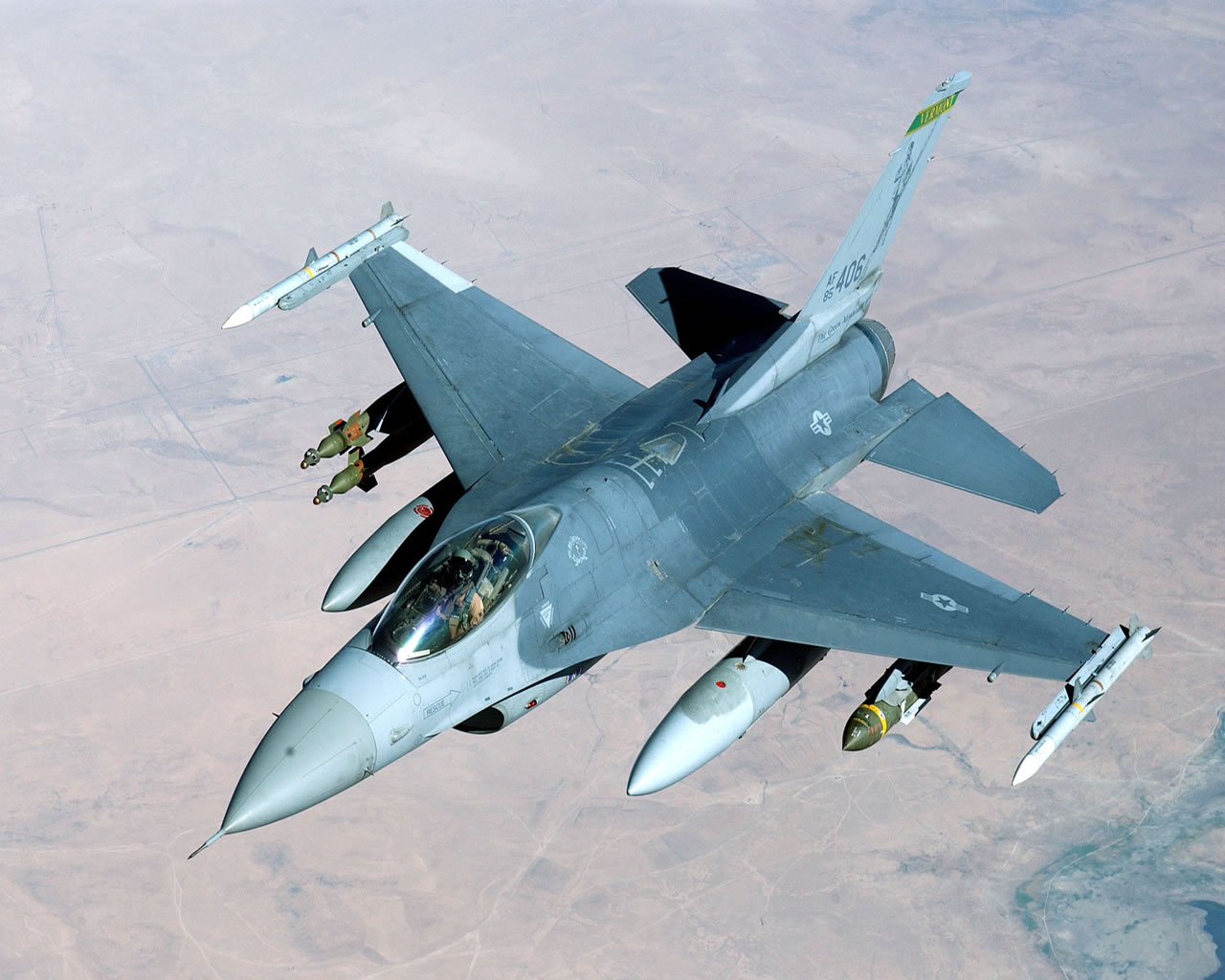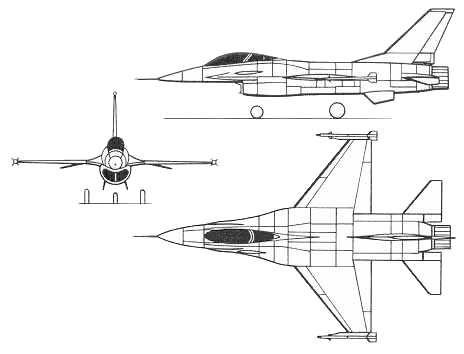General Dynamics F-16C/D Fighting Falcon




The F-16C/D is the current production version of the Fighting Falcon, the C being the single-seat version and the D being the two-seat version. It was introduced in 1984 and was intended to make the F-16 capable of all-weather operations and compatible with Beyond Visible Range (BVR) missiles such as the AIM-7 Sparrow and later the AIM-120 AMRAAM. This deficiency had been particularly obvious in operations over Europe, where the weather is generally bad much of the time.
The improvements introduced by the F-16C/D were originally known as the MSIP Stage II, or Block 25. This was redesignated F-16C/D in 1981. So F-16C/Ds all begin with Block 25. The first F-16C was 83-1118, which flew for the first time on June 15, 1984 under the controls of company test pilot Kevin Dwyer. The first Block 25 F-16D (83-1174)was flown on September 14, 1984, piloted by John Fergione and JimSmolka. The new Fighting Falcon variant was introduced on the production line in December of 1984.
Flight testing of the new F-16C revealed problems, most of which were associated with software difficulties. Development lead times which were once paced by hardware problems were now becoming paced by software bugs, and there was a shortage of people who understood both computers and airplanes.
Externally, the F-16C is almost identical to the F-16A. The only significant external difference is the introduction on the F-16C of an enlarged triangular base or "island" on the rear fuselage leading up to the vertical fin, with a small blade antenna protruding upward from it. This extra space was originally intended for the Airborne Self-Protection Jammer (ASPJ) that is used on Navy aircraft. The USAFs ASPJ program became mired in controversy in 1989-90, and has now been abandoned. The UHF radio blade antenna protudes at an angle of 35 degree sweepback on the forward base of the vertical fin. The same antenna was internal on the F-16A/B and was hidden underneath a dielectric panel.
Most of the differences between the F-16A/B and F-16C/D versions are internal. The F-16C/D employs the Westinghouse AN/APG-68(V) multi-mode radar with better range, sharper resolution, and expanded operating modes. The AN/APG-68(V) was a considerable advancement over the APG-66 of the F-16A/B. The planar array in the nose provides numerous air-to-air modes, including range-while-search, uplook and velocity search, single target track, raid cluster resolution, and track-while-scan for up to 10 targets. Beyond-visible-range capability has been added in the form of a high-PRF track mode to provide illumination for guidance of the AIM-7 Sparrow semi-active radar homing missile. For air-to-ground work, the modes that are available include maritime, fixed and moving target, ground mapping, Doppler beam sharpening, ranging, beacon, and target freeze. The beacon mode is used for navigation fixes and for bombing offset. The maritime modes include a real beam mapping, sea search, fixed target track, and ground moving target indication and track. There is also a freeze mode. The fixed ground target modes include a real beam ground mapping mode, FTT mode, expanded display mode, and Doppler beam sharpening mode. The moving ground target modes include real beam ground mapping, GMTI or TMTT, expanded display, and freeze. The radar is capable of handling the guidance of the AGM-65 Maverick air-to-surface missile.
The pilot of the F-16C/D has a larger HUD. The function keypad is located at the base of the HUD (it was located in a console to the left in earlier F-16A/Bs). A data display with key information items is located beside the HUD.
The Block 25 Fighting Falcons were delivered with the Pratt & Whitney F100-PW-200 engine, which had a series of teething problems. These aircraft were later retrofitted with either the F100-PW-220 engine (a"new-build" powerplant) or the F100-PW-220E (a rebuild of an existing -200 engine). These newer engines are equipped with a Digital Electronic Engine Control (DEEC), which helps with stall-free performance and is more reliable.
The Block 25 Fighting Falcons employ the ALR-69 radar warning receiver and carry two ALE-40 chaff/flare dispensers.
Following initial deliveries to overseas units, the 61st TFTS of the 56th TFW stationed at MacDill AFB in Florida became the first continental US unit to receive the F-16C/D, getting its first planes in April of 1986 and becoming operational in October of 1988. A total of 177 Block 25 F-16Cs and 25 Block 25 F-16Ds were built.